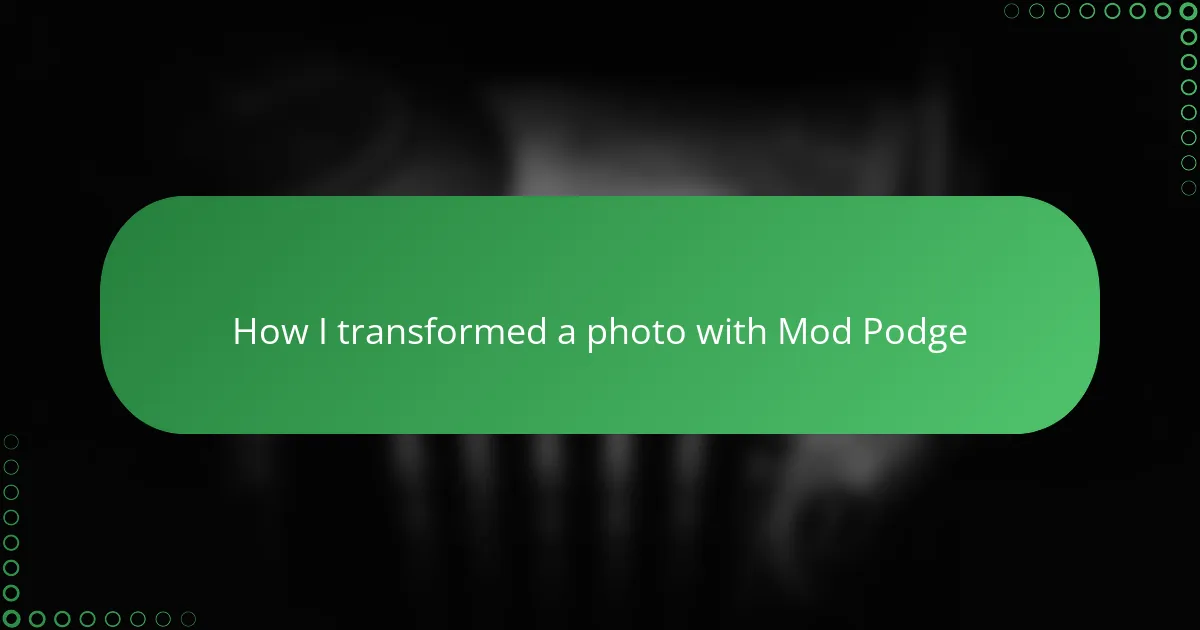Key takeaways
- Mod Podge is a versatile, water-based glue and sealer that enhances and protects paper crafts while offering various applications like decoupage and collage.
- Essential materials for using Mod Podge include a soft foam brush, clean workspace covering, and appropriately selected decorative paper or photos.
- Best practices for achieving optimal results involve applying thin layers, ensuring proper drying time, and smoothing out air bubbles immediately after placement.
- Creative ideas for Mod Podge include layering textures with torn paper, decoupaging on unconventional surfaces, and creating overlapping photo effects for artistic depth.
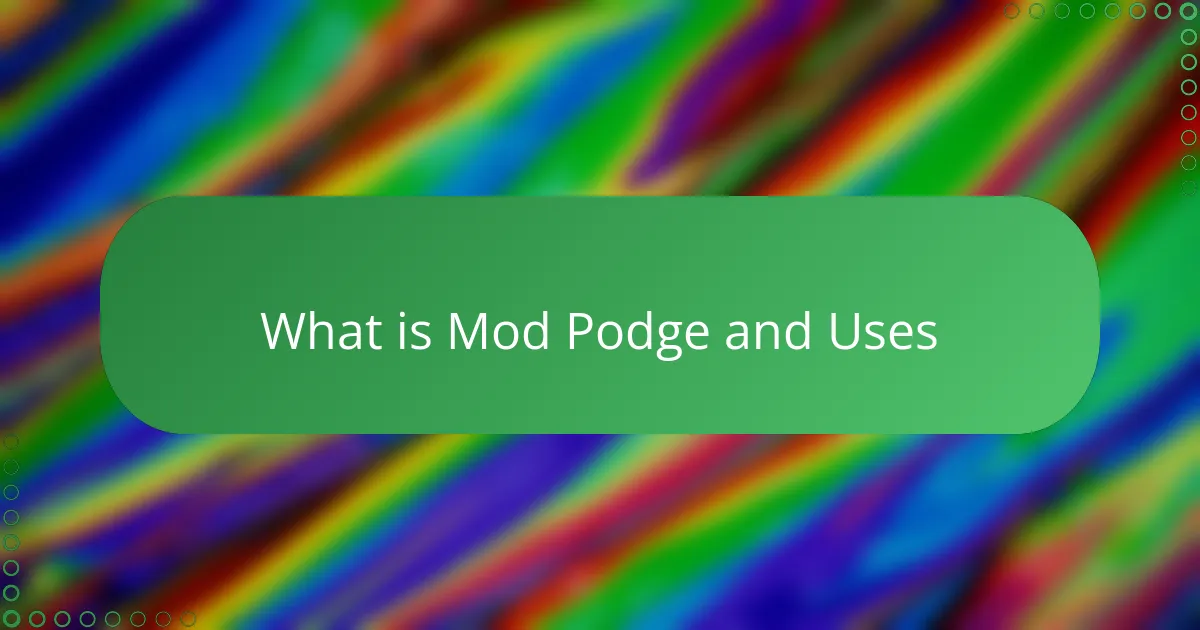
What is Mod Podge and Uses
Mod Podge is a versatile, water-based sealer, glue, and finish all rolled into one. When I first discovered it, I was amazed at how easily it could transform a simple photo, adding both protection and a subtle sheen in just a few brushstrokes. Have you ever wondered if there’s a product that can simplify crafting without compromising quality?
In my experience, Mod Podge works wonderfully as a glue to adhere photos onto handmade paper, but it doesn’t stop there. It also serves as a protective topcoat that keeps your paper crafts safe from wear and tear. This dual purpose makes it an essential tool whenever I want a polished, lasting finish.
What truly surprised me about Mod Podge is its range of uses beyond just paper crafts—it’s perfect for decoupage, collage, and even light varnishing. Its ability to dry clear and flexible makes it so user-friendly that I often find myself reaching for it in unexpected craft projects. Isn’t it incredible when one product can open a whole new world of creative possibilities?
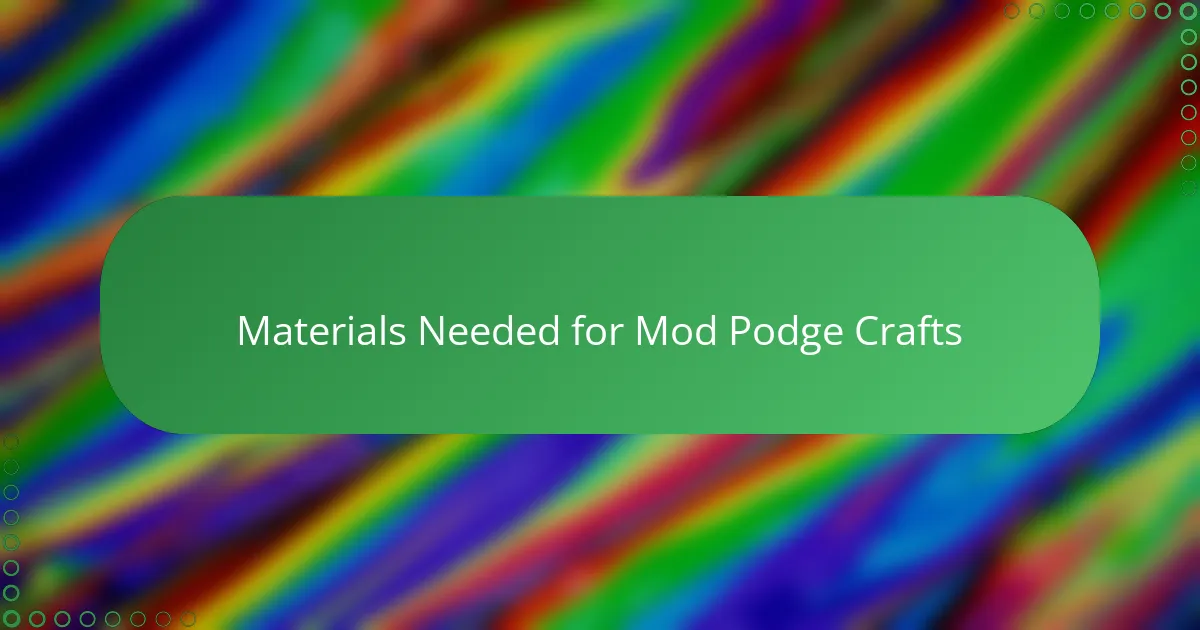
Materials Needed for Mod Podge Crafts
To get started with Mod Podge crafts, I always gather a few key materials that make the process smooth and enjoyable. Besides the Mod Podge itself, having a soft foam brush is essential—it helps apply the glue evenly without leaving streaks or bubbles. Have you ever tried using a regular brush only to end up with clumps or uneven drying? That’s why this simple tool makes such a big difference for me.
Another material I can’t do without is a clean, flat surface to work on, preferably covered with wax paper or a plastic sheet. This protects my workspace from mess and lets me lift the craft easily when it’s drying. I’ve learned the hard way that a little preparation upfront saves a lot of frustration later on.
Of course, your photos or any decorative paper are the real stars here. Selecting paper that’s not too thick ensures the Mod Podge adheres well and dries faster. Over time, I’ve realized that choosing the right materials not only improves the final look but also makes the whole crafting experience more enjoyable and less of a hassle. Have you noticed how preparing your materials thoughtfully changes the outcome?
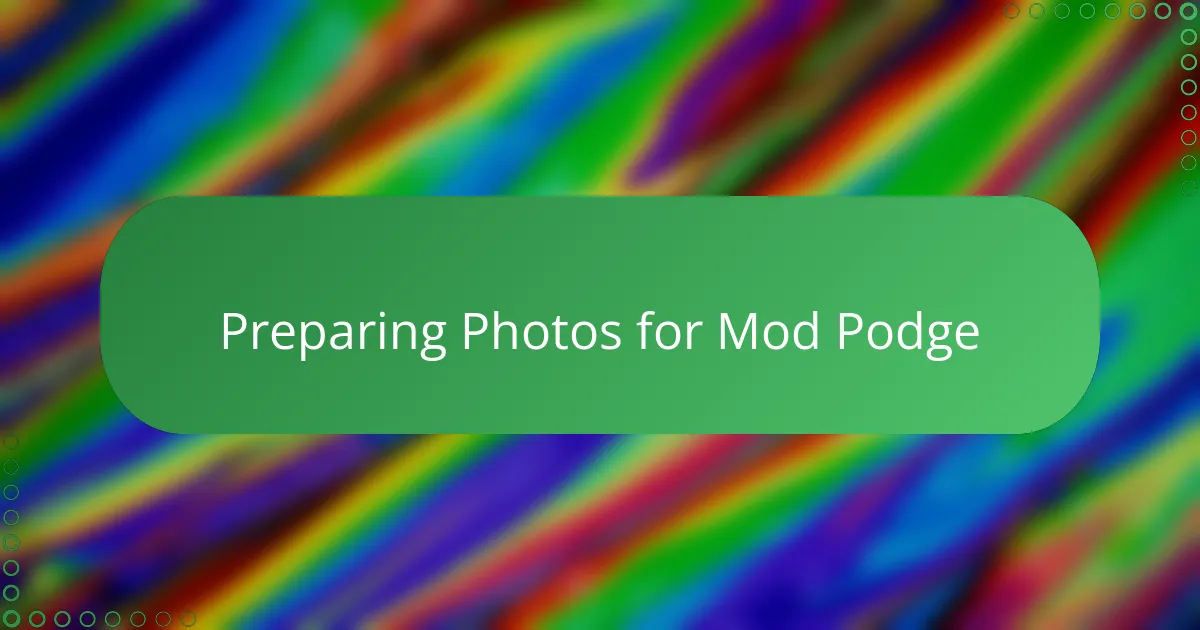
Preparing Photos for Mod Podge
Before I even think about applying Mod Podge, I always make sure my photos are printed on smooth, matte paper. Glossy photos might look shiny on their own, but they tend to bubble or peel when covered with Mod Podge. Have you ever had that frustrating experience where your photo starts wrinkling right after sealing? That’s why I now stick to matte finishes—they just play nicer with the glue.
Cutting the photo to size is another step I never skip. I find that trimming just a little inside the edges prevents any peeling or lifting later on. Plus, I usually give the photo a gentle wipe with a dry cloth to remove any dust or fingerprints—sometimes those tiny specks can mess with the smooth finish, and it drives me crazy.
One trick I’ve learned from trial and error is to let the photo sit flat under a heavy book for a few hours before applying Mod Podge. This simple step helps flatten out any curling or warping from printing. Have you tried this before? It’s a game-changer that makes applying the Mod Podge much easier and ensures a snug, lasting bond between the photo and the handmade paper.

Step by Step Mod Podge Photo Transformation
First, I apply a thin layer of Mod Podge onto the handmade paper using a soft foam brush. Spreading it evenly requires patience—I’ve found that rushing this step often leads to bubbles or uneven spots. Have you ever seen those frustrating air pockets ruin an otherwise perfect photo project? Taking my time here always pays off.
Next, I carefully place the photo on top, smoothing it gently from the center outward to push out any trapped air. This part feels almost meditative to me—like I’m bringing the image to life, sealing it onto the textured surface. Sometimes, I use a clean credit card edge to press down firmly without damaging the photo, making sure every corner sticks well.
Finally, comes the topcoat of Mod Podge that truly transforms the photo. Applying multiple thin layers, allowing each to dry completely, creates that subtle sheen and protective finish I love. It’s rewarding watching a dull photo turn vibrant and feel more permanent with each brushstroke—don’t you enjoy seeing a craft come alive right before your eyes?
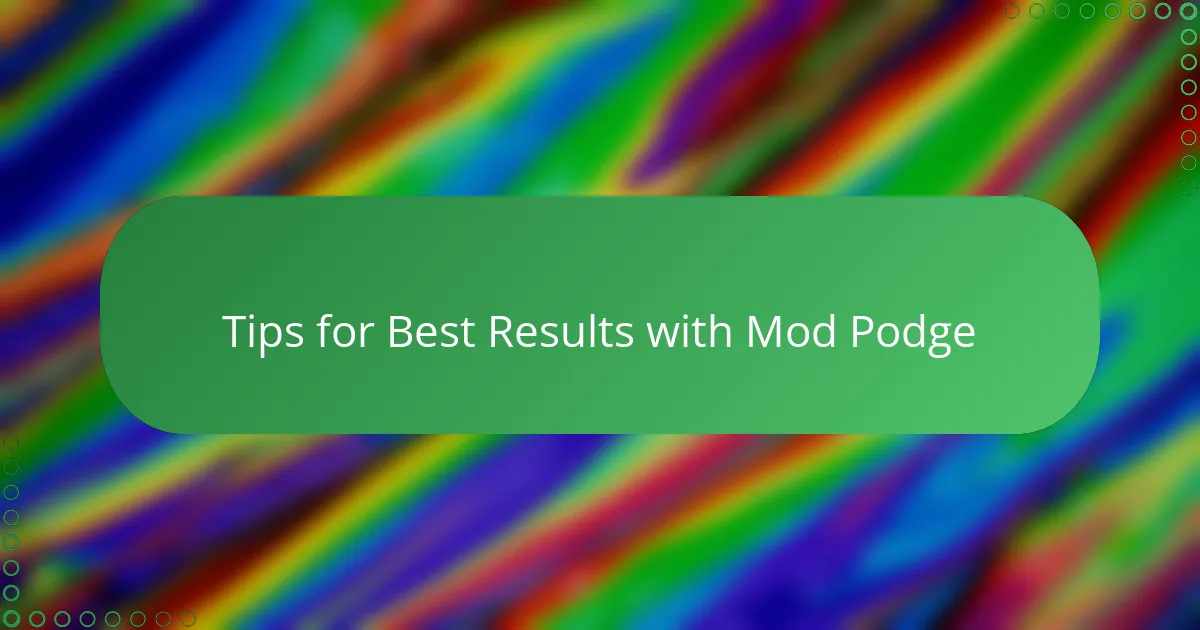
Tips for Best Results with Mod Podge
When working with Mod Podge, I’ve found that applying thin, even layers is key to getting the best result. Thick coats tend to dry unevenly and can lead to sticky spots or visible brush marks. Have you ever rushed a step only to regret it later? Taking your time really makes the difference.
Another tip that transformed my experience is letting each layer dry fully before adding the next. Patience here saves you from smudges and uneven textures. It might feel like waiting slows you down, but in reality, it speeds up the overall process by avoiding rework.
Lastly, I always keep a damp cloth nearby to quickly wipe off any stray Mod Podge on the edges. This simple habit keeps the edges clean and neat, making the final piece look professionally finished. Don’t you love when small details turn a good project into something great?
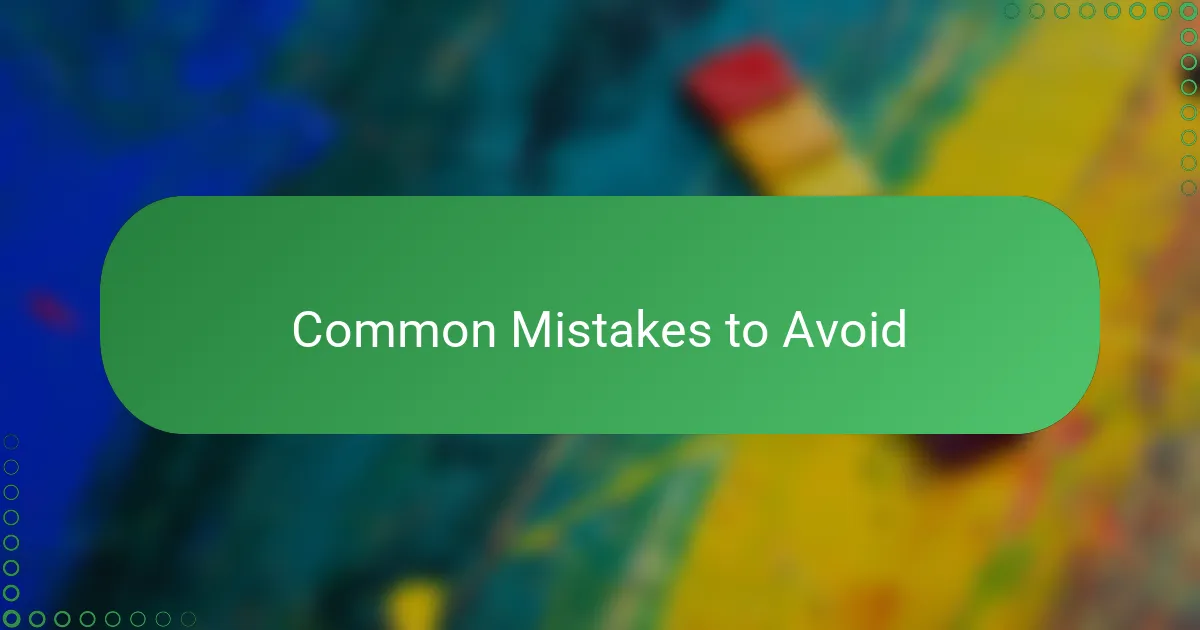
Common Mistakes to Avoid
One mistake I see people make often is using Mod Podge too thickly. I’ve learned the hard way that slathering on a heavy coat doesn’t speed up drying—it actually causes streaks and sticky patches. Have you ever peeled back a photo only to find uneven glue ruining the smooth finish? Thin, even layers are a game-changer.
Another trap to avoid is rushing the drying time between coats. I remember once rushing through and ending up with smudges that completely spoiled my photo’s look. Waiting might test your patience, but it pays off by giving each layer a chance to set properly. Isn’t it worth a little extra time to save yourself from redo frustration?
Lastly, not smoothing out air bubbles right after placement is a common slip. I’ve caught myself too late, seeing tiny trapped bubbles magnified by the clear finish. Taking a moment to gently press from the center outward, or using a soft tool, makes all the difference. Don’t you feel more confident when the photo lies perfectly flat and sealed?
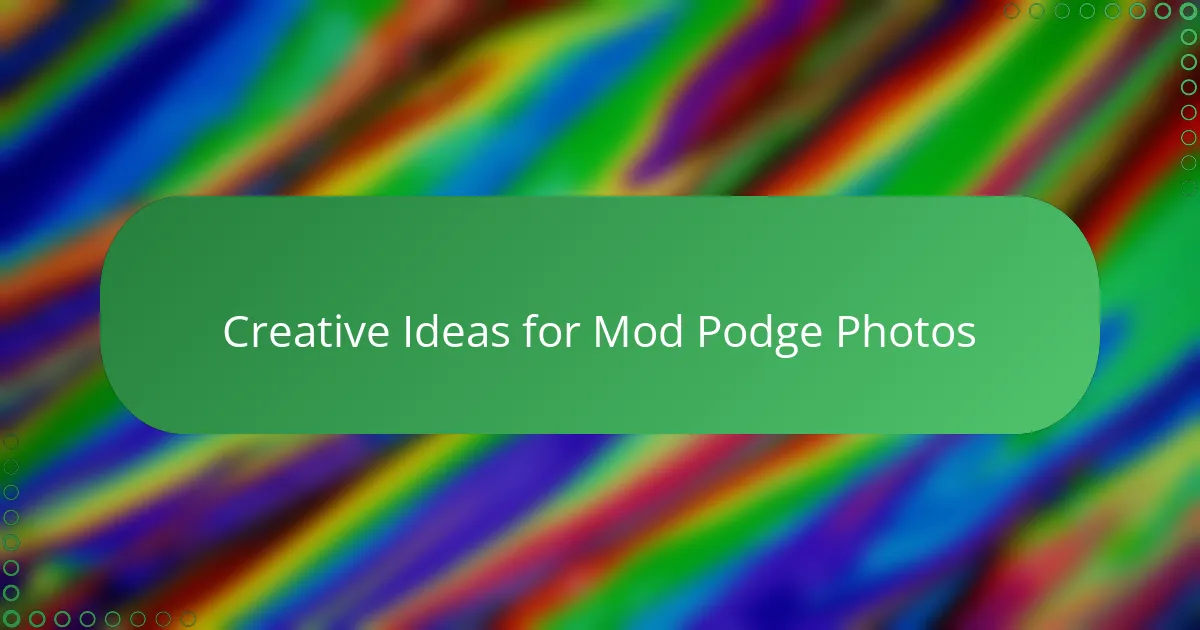
Creative Ideas for Mod Podge Photos
When it comes to creative ideas for Mod Podge photos, I love experimenting with layering techniques. For instance, adding bits of torn tissue paper or dried leaves over a photo creates a textured, artsy feel that really makes the image pop. Have you ever tried mixing elements like that? It’s a simple way to add depth and personality without overwhelming the original photo.
Another fun approach I often use is decoupaging photos onto unconventional surfaces like handmade paper lanterns or recycled cardboard. The matte finish of Mod Podge not only protects the photo but also blends it seamlessly with the tactile surface, giving a unique handmade charm. I remember turning a blurry snapshot into a vibrant keepsake by simply mod-podging it on a textured background—talk about giving old photos a second life!
If you want to get playful, how about layering transparent photos or slides on top of each other with Mod Podge in between? This creates a cool, overlapping effect that sparks curiosity and invites closer inspection. I tried this with some vintage family pictures, and it felt like weaving stories together visually. Isn’t it rewarding when a few creative tweaks turn a simple photo into a captivating art piece?
